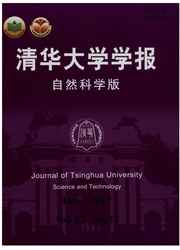

 中文摘要:
中文摘要:
Although extensive analyses of road segments and intersections located in urban road networks have examined the role of many factors that contribute to the frequency and severity of crashes, the explicit relationship between street pattern characteristics and traffic safety remains underexplored. Based on a zone-based Hong Kong database, the Space Syntax was used to quantify the topological characteristics of street patterns and investigate the role of street patterns and zone-related factors in zone-based traffic safety analysis. A joint probability model was adopted to analyze crash frequency and severity in an integrated modeling framework and the maximum likelihood estimation method was used to estimate the parameters. In addition to the characteristics of street patterns, speed, road geometry, land-use patterns, and temporal factors were considered. The vehicle hours was also included as an exposure proxy in the model to make crash frequency predictions. The results indicate that the joint probability model can reveal the relationship between zone-based traffic safety and various other factors, and that street pattern characteristics play an important role in crash frequency prediction.
 英文摘要:
英文摘要:
Although extensive analyses of road segments and intersections located in urban road networks have examined the role of many factors that contribute to the frequency and severity of crashes, the explicit relationship between street pattern characteristics and traffic safety remains underexplored. Based on a zone-based Hong Kong database, the Space Syntax was used to quantify the topological characteristics of street patterns and investigate the role of street patterns and zone-related factors in zone-based traffic safety analysis. A joint probability model was adopted to analyze crash frequency and severity in an integrated modeling framework and the maximum likelihood estimation method was used to estimate the parameters. In addition to the characteristics of street patterns, speed, road geometry, land-use patterns, and temporal factors were considered. The vehicle hours was also included as an exposure proxy in the model to make crash frequency predictions. The results indicate that the joint probability model can reveal the relationship between zone-based traffic safety and various other factors, and that street pattern characteristics play an important role in crash frequency prediction.
 同期刊论文项目
同期刊论文项目
 同项目期刊论文
同项目期刊论文
 期刊信息
期刊信息
